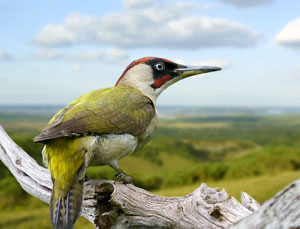Kingfishers: The Jewel-toned Wonders of British Waterways and Wetlands
A burst of vivid colour captures the eye as a kingfisher darts across calm rivers in the quiet British surroundings. The British kingfisher (Alcedo atthis), a little but brilliant bird that has captivated the attention of birdwatchers and nature lovers worldwide, is the source of this transient brilliance. Here, we venture into the fascinating world of the British Kingfisher, learning about its appearance, habitat, behaviour, life cycle, and conservation status.

Appearance:
With an iridescent tapestry of colours that shimmer and shift in the light, the Kingfisher is a masterpiece of natural creativity. It stands out dramatically against the serene background of rivers with its vibrant azure-blue plumage flecked with orange, green, and turquoise hues. This jewel-like brilliance acts as a disguise and a lure for potential prey, serving dual functions.
Habitat and Range:
A variety of water settings, such as rivers, lakes, ponds, canals, and estuaries, are home to kingfishers. The majority of their diet consists of fish and aquatic invertebrates, which is why they are so fond of waterways and wetlands. These fascinating birds can be found all over the United Kingdom, from the southernmost parts of England to the Scottish Highlands.

Hunting and Feeding:
British kingfishers, known for their exceptional fishing skills, are expert hunters. They wait calmly while keeping a close eye on the water’s surface from perches atop branches or reeds. They dive headfirst into the water while catching fish with their dagger-like beaks with amazing accuracy. A specialised nictitating membrane that protects their eyes and allows them to see properly underwater further contributes to their incredible underwater agility.
Breeding and Family Life:
The Kingfisher engages in courtship rituals as spring approaches, which include complex displays of flight and calls. The ties between mating pairs are strengthened by these rituals. Along riverbanks, the birds dig tunnels into the earth and build their nests there. The female lays a clutch of eggs once the nest is prepared, and she then incubates them for around three weeks. Until the fledglings are prepared to leave the nest after about four weeks, both parents alternately feed the chicks with fish that they have previously regurgitated.
Conservation Considerations:
The health of its aquatic habitats is crucial for the survival of the British kingfisher, despite the fact that species is not officially regarded as threatened. The availability of acceptable feeding grounds can be impacted by pollution, habitat deterioration, and changes in water quality. Clean water supplies, riparian ecosystems, and promoting ethical fishing and land management practises are the main targets of conservation initiatives.
Cultural Significance and Symbolism:
Kingfishers have always captivated people’s attention, and they frequently serve as symbols for virtues like endurance, prosperity, and vitality. A period of calm weather was predicted by the appearance of the kingfisher, according to British mythology, which gave the bird’s presence a mysterious aspect.
A Treasured Sight:
Meeting a British kingfisher in its natural surroundings is a once-in-a-lifetime experience for bird and nature lovers. These magnificent gem-toned wonders serve as a window into the delicate balance of life along streams and serve as a constant reminder of the complicated relationships that form our ecosystems.
Finally, the British kingfisher is a living illustration of the wonder and tenacity of nature. It is a true jewel in the UK’s natural tapestry because of its magnificent look, outstanding hunting abilities, and crucial function within aquatic ecosystems. Let the kingfisher’s ethereal presence serve as a reminder of the delicate harmony we work to conserve as we negotiate the complex web of conservation and cohabitation.





